Experienced auger rotor SNN-67
By 1966, the specialists of the ZIL Special Design Bureau, headed by V.А. Grachev found all the basic ways to obtain the maximum possible characteristics of the wheel all-terrain vehicle. Further development of such technology was associated with the updating of certain units, the use of new approaches, etc. At the same time, it was possible to test in parallel completely new original ideas affecting the architecture of the chassis. Having such an opportunity, Plant them. Likhachev took advantage of it.
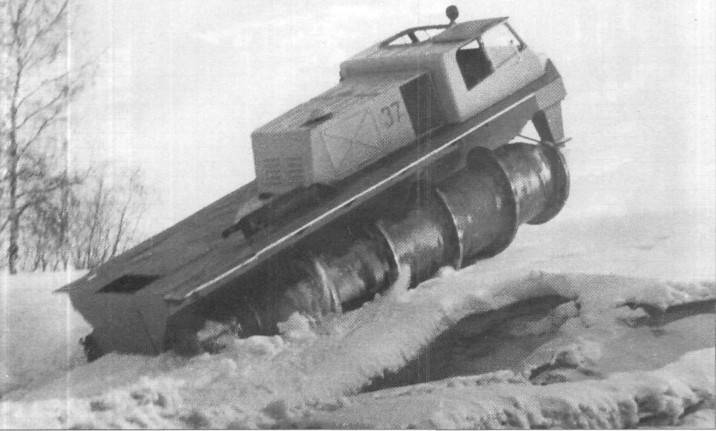
ShN-67 all-terrain vehicle in the snow
In 1966, the designers of SKB ZIL were able to familiarize themselves with an advertising film dedicated to the new, experienced US all-terrain vehicle. An unusual machine from the company Chrysler was equipped with a chassis in the form of a pair of rotary-screw units that performed the functions of a propulsion unit. Following the results of watching a movie, it was decided to launch its own specific undercarriage research program. The first results in the framework of the research work were planned to be received already this year.
Over the next few months, SKB ZIL exchanged experience with other automotive companies that had already launched their rotary screw propellers. By the beginning of 1967, a certain amount of experience had been gained that allowed us to begin developing our own prototype.
For a number of reasons, in the documents of the special design bureau, the rotor-screw propeller was called auger or auger rotor. This feature of the name was reflected in the working title of the pilot project. The all-terrain vehicle was designated SN-67. Figures meant the year of creation. Designers and testers also assigned the project a nickname - "Screw". It should be noted that in the future the SN-67 project was finalized, after which it was renamed SN-68, again by the year of work.
The ShN-67 prototype was created as a technology demonstrator, and therefore no special requirements were placed on it. She had to have a fairly simple design that provides verification of the main bold ideas. To speed up the construction, it was proposed to use the maximum possible number of ready-made units and assemblies. However, certain products had to be developed and assembled from scratch.
Especially for the new project I had to develop a non-standard case. It was based on a frame of metal profiles, which was installed sheet sheathing. The body was formed by several major devices. So, its lower part was a kind of boat with a trapezoidal cross-section. The bow part of the hull expanded, after which the cross section of the aggregates did not change to the stern. Above the sloping sides of the “boat” were placed two developed shelves, the upper part of which was connected to the roof-deck of the hull. In the front of the hull it was planned to place the cockpit, behind which was a box-shaped engine cover.
In the middle part of the frame, inside the “boat”, they placed the ZIL-375 gasoline engine with horsepower 180. The engine is connected to the so-called. the main gear and turning mechanism, borrowed from the tracked vehicle M-2 from OKB MMZ. The issuance of torque to the propeller was carried out through a pair of inclined shafts located in the rear of the hull. They passed through the propulsion racks and, using reverse gearboxes, built on the basis of the gears of the onboard gears of the ZIL-135L all-terrain vehicle, transmitted power to the augers.
The fuel system of the all-terrain vehicle was based on the ZIL-157 serial units. Electrical equipment almost without modifications borrowed from the truck ZIL-130.
In front of the hull, under the side shelves, there were vertical supports with a movable mount for the front axles of the auger rotor. In the stern of the hull, on its sloping sides, they placed a pair of larger and larger racks in which the transmission devices were placed.
For obvious reasons, the rotary auger for the experimental ShN-67 all-terrain vehicle was developed from scratch. The screw was a rather complex device with a length of 4,2 m and a diameter (along grouser) 1 m. The auger body was made of 2-mm steel and had a collapsible design. It was a long cylinder with a diameter of 800 mm, supplemented by a pair of conical fairings. To increase the rigidity of the structure, an 100-mm layer of polyurethane foam was applied on the body. There was a spiral lug on the outside of the screw. The metal strip of trapezoidal section was rigidly fixed on the body. Spiral elevation angle - 17 ° 40 '.
Two similar devices were mounted on the side racks and placed along the body of the machine. The augers were driven using transmission units located in the rear racks. By controlling the auger, the driver could change the speed of rotation of the rotor thrusters or change the direction of their rotation. All this, according to calculations, provided sufficient mobility and maneuverability.
In front of the hull of the experimental ShN-67, a closed three-seat cockpit was placed. The fiberglass hood of the cab with advanced glazing was borrowed from the search and recovery all-terrain vehicle PES-1. The driver's seat from the GAZ-69 was placed in the center of the cab. On the sides of it provided a couple of places for other testers. Access to the cabin was provided only with a hatch in the roof. However, the small height of the all-terrain vehicle did not interfere with the landing.
Ready screw rotor should be of medium size. The length of the machine slightly exceeded 5,5 m, width - 3,1 m, height - only 2 m. On a solid surface SHN-67 had ground clearance in 500 mm. Curb weight was set at 3750 kg with a load capacity 1250 kg. The total mass, therefore, should have reached 5 t.
Already in December, the SKB ZIL 1966 began assembling the frame of the future technology demonstrator. About a month later, the installation of the units on the frame started. For a number of technical reasons, it was decided to remove some of the nodes used by the ZIL-375 engine, which, however, had no effect on its performance. By the beginning of March, the all-terrain vehicle was completed, and soon it was planned to test it on real roads, which were already used to test other equipment.
4 March 1967, an experienced ShN-67, was delivered to the ZIL test base in the Chulkovo village near Moscow. An all-terrain vehicle was run-in under simple conditions, after which inspections began to determine the maximum performance. Checks on rough terrain, swamps and snow continued until the end of March and allowed us to collect all the necessary data.
On the roads, including soft dirt, the “Screw” kept confidently and, turning the rotors of the propeller, moved or maneuvered. Depending on the direction of rotation of the two augers, the machine could move forward or backward, or move sideways. For the translational motion, both augers had to rotate in different directions, for the lateral one.
Characteristics on rough terrain were sufficient, but the car could not work normally on paved roads. In such conditions, the lugs of an unusual propulsor wore out from friction against the coating much faster than on the ground. The rover could float, and a pair of rotating rotors created traction up to 600 kg.
According to the results of tests of the ShN-67 all-terrain vehicle, it was decided to rework the transmission and chassis. Thus, in the updated project, reverse gears should be abandoned in favor of onboard gears with a two-stage conic-cylindrical pair from ZIL-130. This refinement increased the efficiency of the transmission and allowed us to obtain the desired characteristics, but at the same time led to the loss of the possibility of a turn on the spot.
New screw rotors have also been developed. Now they were proposed to be made of aluminum alloy AMG-61 while retaining the existing design. Instead of one spiral lug, now it was planned to use the so-called. two-way. The profile of this part changed to a triangular one, and the step was reduced to 1,6 m. The helix angle of the helix was brought to 32 ° 40 '. According to calculations, this design auger allowed to increase the maximum speed of translational motion.
The upgraded version of the all-terrain vehicle was designated SN-68. The new project retained the maximum continuity with the existing one, and therefore it was possible to do without building a new prototype. The existing SHN-67 type auger was supplied with new transmission units and undercarriage devices, after which it was simply renamed. SN-67 restructuring according to SN-68 project was completed at the end of April 1968.
6 May on the pond in the area Lytkarino passed the first tests of the updated machine. Due to the new augers, the all-terrain vehicle was able to accelerate to 12 km / h. However, it was not without problems. When exiting the water, the all-terrain vehicle put its nose on a fairly steep bank. The test driver tried to pass back for a new attempt to lift, but the original propulsion began to literally drag the car under water. Fortunately, the driver noticed it in time and took action, not allowing the vehicle to be flooded.
Winter testing of SN-68 in the snow was carried out only in the spring of the next 1969 year. The field for testing became the fields of the Perm region, where free-flowing snow was about 1 m deep. Regardless of the time of day, the average air temperature remained negative until the end of the tests.
Under the same conditions, several all-terrain vehicles were tested at once. Together with SHN-68 studied several other machines, including the development of SKB ZIL. Most of these samples had non-standard running gears.
Comparisons have shown that the “Auger”, in contrast to a number of other samples, is capable of moving in snow deeper than 900 m. At the same time, the maximum speed reached 18 km / h. Depending on the weight of the cargo at the site of the all-terrain vehicle, the speed was slightly reduced. With a mass of 5 t, it accelerated only to 17,4 km / h.
The SN-68, among other things, was studied as a towing vehicle. It was determined that the machine is directly dependent on its mass. So, with the full mass in 5 T, a thrust up to 1200 kg developed on the rear hook. With a weight of 3750 kg, this parameter was reduced to 970 kg. Towing the specified cargo, all-terrain vehicle could continue to move. Exceeding the set load values led to a slip. The screws began to rotate freely, raking the ground or snow, and could no longer move the car.
With a sufficiently high mobility in the snow all-terrain vehicle had limited ability to climb on the slopes. When moving forward, the augers threw snow under the bottom of the hull, as a result of which under it formed a sediment inhibiting movement. Such features of the machine limited the steepness of the 12 slope to be overcome by degrees. Moving back, the auger went to the sides of the snow, and therefore did not risk sitting down. According to the results of such checks, it was decided to change the screws in places. Now, when moving forward, the snow had to be scattered to the sides, and not raked under the bottom.
At the end of January 1970, new tests took place at the Moscow region testing grounds, during which, among other things, maximum running characteristics were established. On compacted snow, the SN-68 was able to reach speeds of more than 30 km / h. Fuel consumption on virgin snow reached 86 l / h. In other conditions, the engine consumed significantly less fuel.
The summer stage of testing, during which the all-terrain vehicle worked on water and marshland, showed the need for some modifications. So, it turned out that in such conditions the optimum acceleration is obtained when water and sludge is ejected under the bottom of the case. In addition, checks have shown that an all-terrain vehicle needs additional skis to move through the swamp. Two inclined plates appeared in front of the augers' front supports, removing vegetation from under the augers, as well as simplifying the ascent to the shore or to the floating vegetation cover.
The tests of the ShN-68 prototype were completed in the first months of 1970. This machine, being a demonstrator of technology, perfectly coped with its task and clearly showed all its features. In practice, it was found that the rotary propeller is indeed of particular interest in the context of the development of ultra-high maneuverability. Such a chassis gave some advantages over other systems, although it was not without drawbacks. First of all, this was manifested in the fact that the augers showed themselves well on off-road conditions, but they very quickly wore out on a hard surface.
For further development of new ideas, a special stand was built at SKB ZIL, at which it was planned to test various screw configurations. Research work has allowed us to gather a lot of important information. In particular, the direct dependence of the thrust force and efficiency on the diameter of the auger body was established. At the same time, similar results were best manifested on more viscous soils. Also, experts learned that the lug should not be higher than a quarter of the diameter of the body, otherwise there was a risk of reduced efficiency. The extension of the screw at the level of 4-6 units recognized as optimal. Drivers with different proportions of this range had almost identical characteristics.
The results of the SN-67 and SN-68 projects interested both scientists and designers, and the military. The search and rescue service of the air force naturally became interested in promising technology with uniquely high cross-country characteristics. Soon, SKB ZIL received an order to develop a new snow and swamp-going vehicle with a rotary screw propeller, suitable for rescue operations. A couple of years the designers, headed by V.A. Grachev accomplished this task and presented the machine PES-3 / ZIL-4904.
The only prototype of the ShN-67 model built, subsequently redone according to the ShN-68 project, was supposed to return to the manufacturer after completion of the tests. There, he probably remained for some time, but there is no information about his future fate. There is reason to believe that at some point a unique machine that represents technical and historical interest was dismantled as unnecessary. Unlike a number of other prototypes and serial models, the authorship of SKB ZIL, ShN-68 was not preserved.
An experienced all-terrain vehicle with the original propeller showed its potential, and was also able to interest potential operators. Like other purely experimental machines, the prototype nicknamed "Screw" confirmed the benefits of unusual ideas and contributed to the further development of technology. This process soon led to the emergence of several new all-terrain vehicles, one of which still remains in the ranks of the search and rescue service and provides for the evacuation of landed astronauts.
Based on:
https://defence.ru/
http://titovo-online.ru/
https://popmech.ru/
R. Danilov Snow-swamp vehicle "Screw". // Technique and weapons, 2010. No.9.
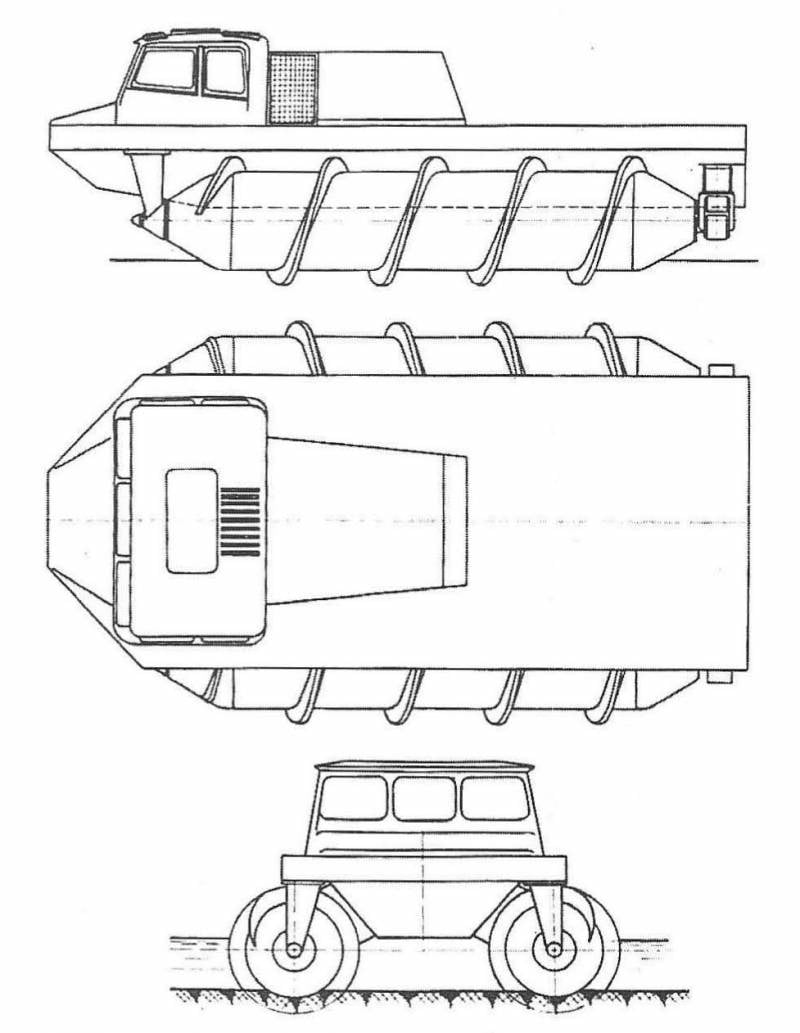
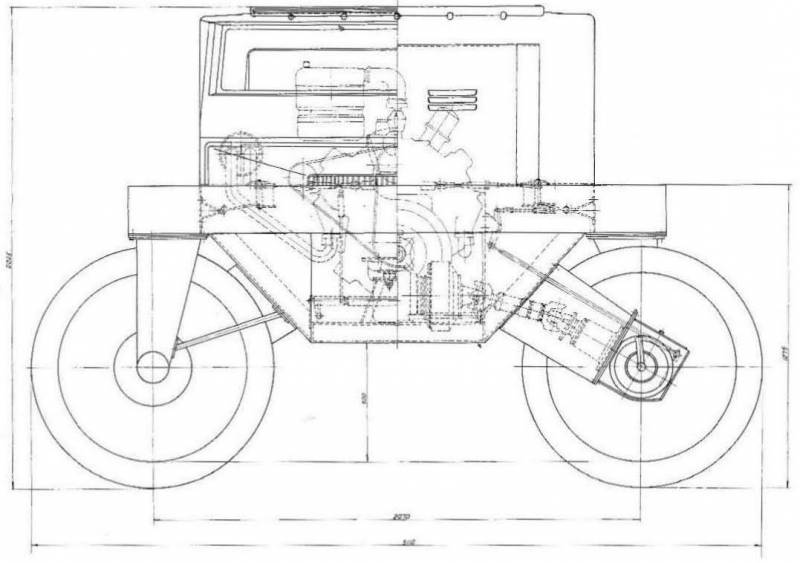
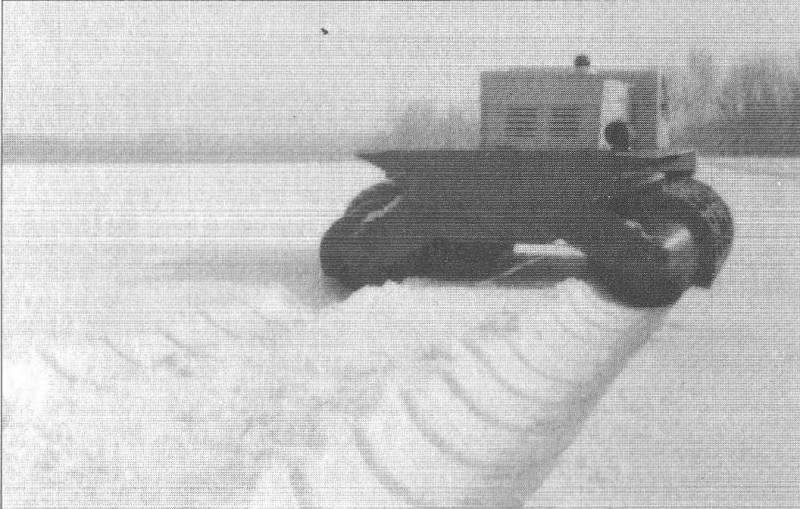
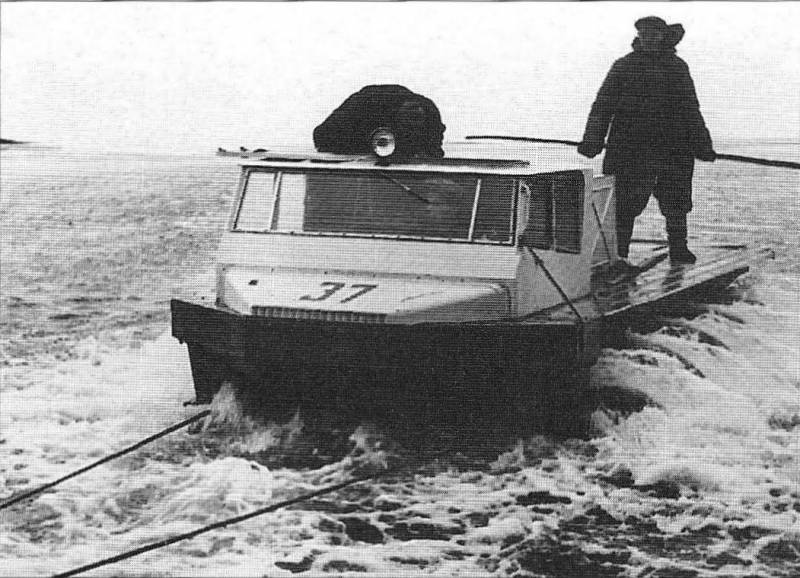
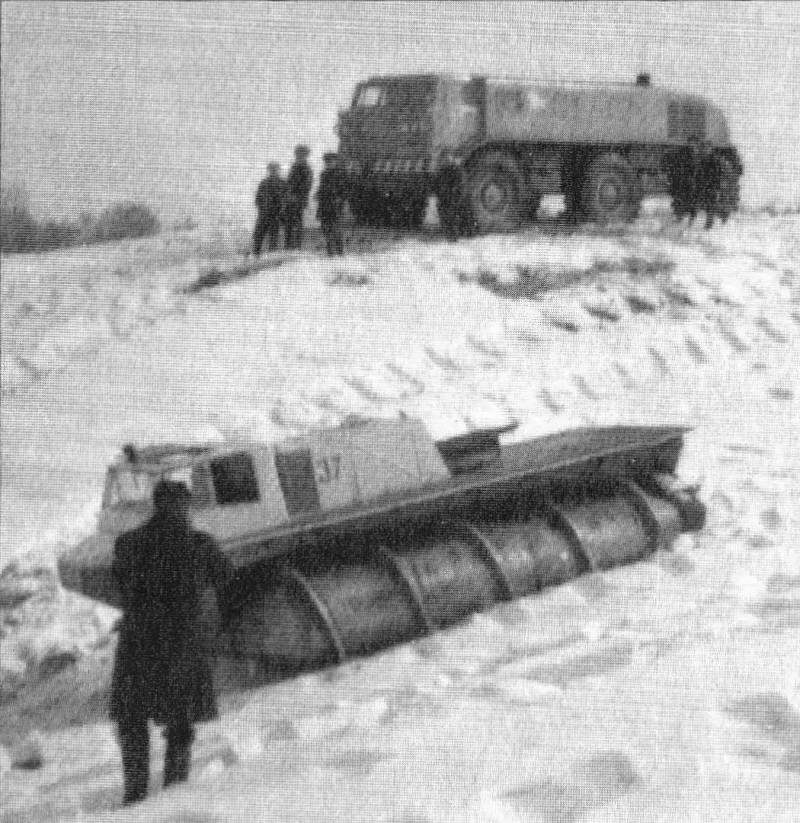
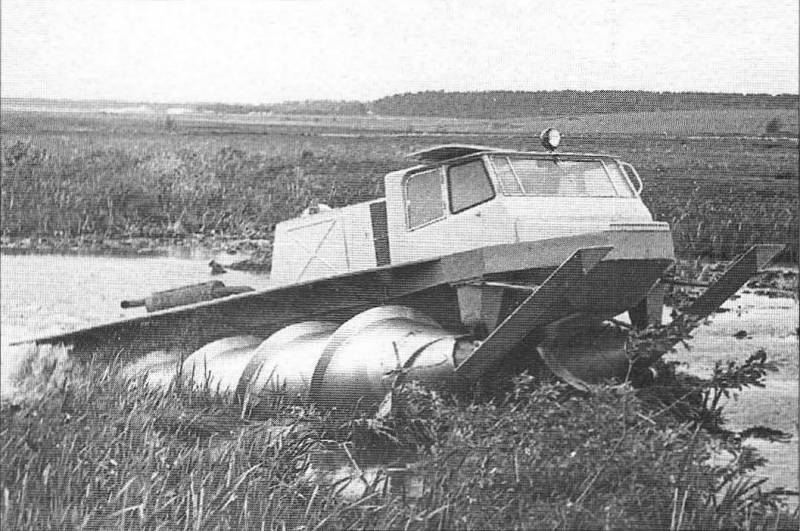
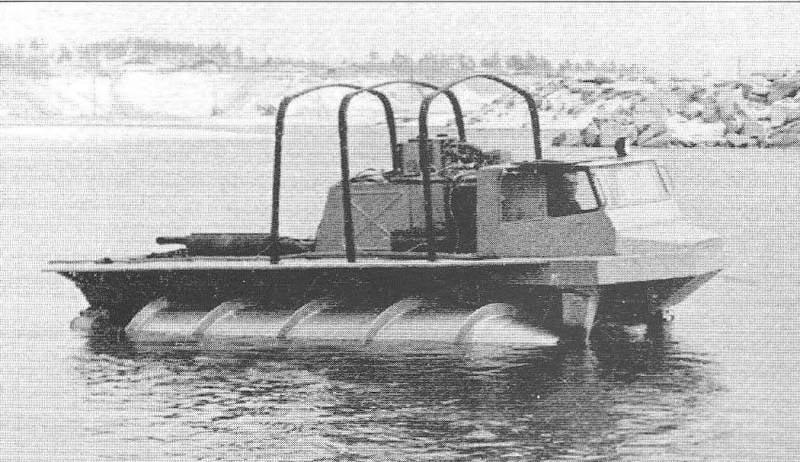
Information